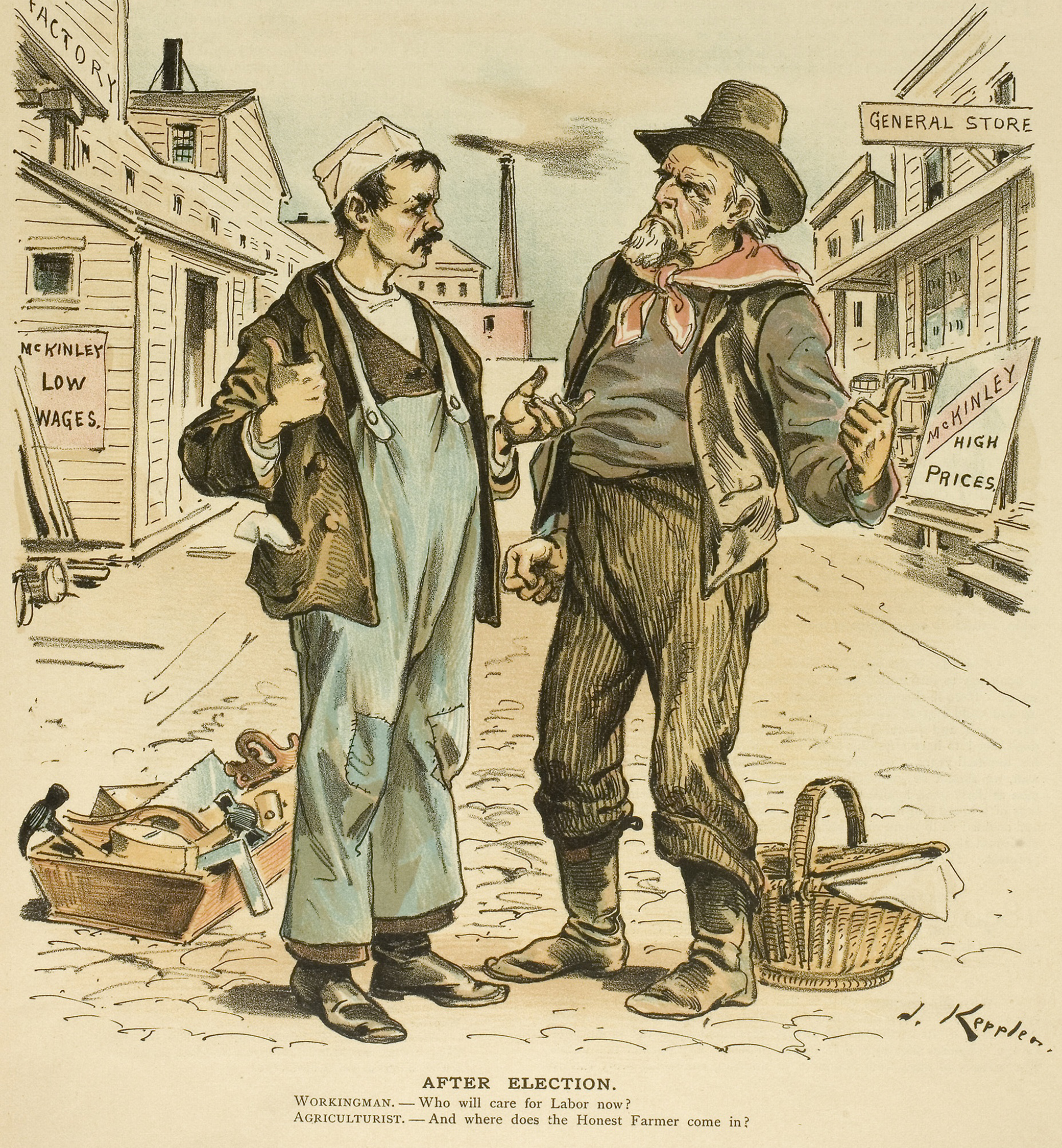
“After Election,” from Puck, by Joseph Keppler, 1890. Art Institute of Chicago, Gift of Miss Nathalie Gookin.
• What did printed ballots used to look like? “Despite regulations in some states that required ballots to be printed in black ink on white paper, parties would use distinctive graphic layouts and production methods that allowed party enforcers to monitor voting by visually determining the allegiance of the voter. Ballots were printed on off-white or brightly hued card stock for a more distinguishing look. The styles ranged from single names printed on small slips of paper to a riot of typefaces, colors, inks, and imagery.” (NewYorker.com)
• How to reframe old museums: “A visitor to London’s Victoria & Albert Museum would find it hard to miss the six-and-a-half-foot-tall statue of Samson slaying a Philistine that stands near the museum’s main entrance…Once in the possession of the Spanish king, the piece came to England after the Prince of Wales (the future Charles I) received it in 1623 as a present and passed it along to his traveling companion, John Villiers. Villiers was a close friend of Charles’s father, James I—and also, many historians believe, his lover.” (Hyperallergic)
• Very ancient art: “The oldest painting in Lubang Jeriji Saléh cave on Borneo, the third-largest island in the world, is a large wild cattle-like beast whose relatives may still roam the local forests. The figure has been dated at 40,000 years old and perhaps older, possibly created about 51,800 years in the past.” (Smithsonian.com)
• Lessons from a new study on human fossils from the Pleistocene: “Early humans faced countless challenges as they fanned out of Africa: icy conditions, saber-tooth cats, and, according to a new study of ancient skeletons, an unusually high number of birth defects, both debilitating and relatively inconsequential. It’s unclear why such abnormalities seem to be so common, but scientists say one strong possibility is rampant inbreeding among small hunter-gatherer groups.” (Science)
• A history of a slur that won’t go away: “Swirling around that legitimate concern about applying ‘boy’ to describe fully grown black men is a growing body of evidence that lays out the ways that actual black boys have been gerrymandered out of the very notion of boyhood. If childhood is a time of innocence that warrants protection, then that stage of life ends much earlier and more abruptly for black boys.” (NPR)
• Found: A six-thousand-year-old stone ax in Virginia. (The Washington Post)
• A question we never thought to ask: “Why Do Taxonomists Write the Meanest Obituaries?” (Nautilus)
• Another question we never thought to ask: “What does a perfect elephant look like?” (The Public Domain Review)
• This week in obituaries: a stuntwoman, a champion of coral reefs, a soldier turned Himalayan mountaineer, and an obituary writer who still has obituaries that have yet to be published.